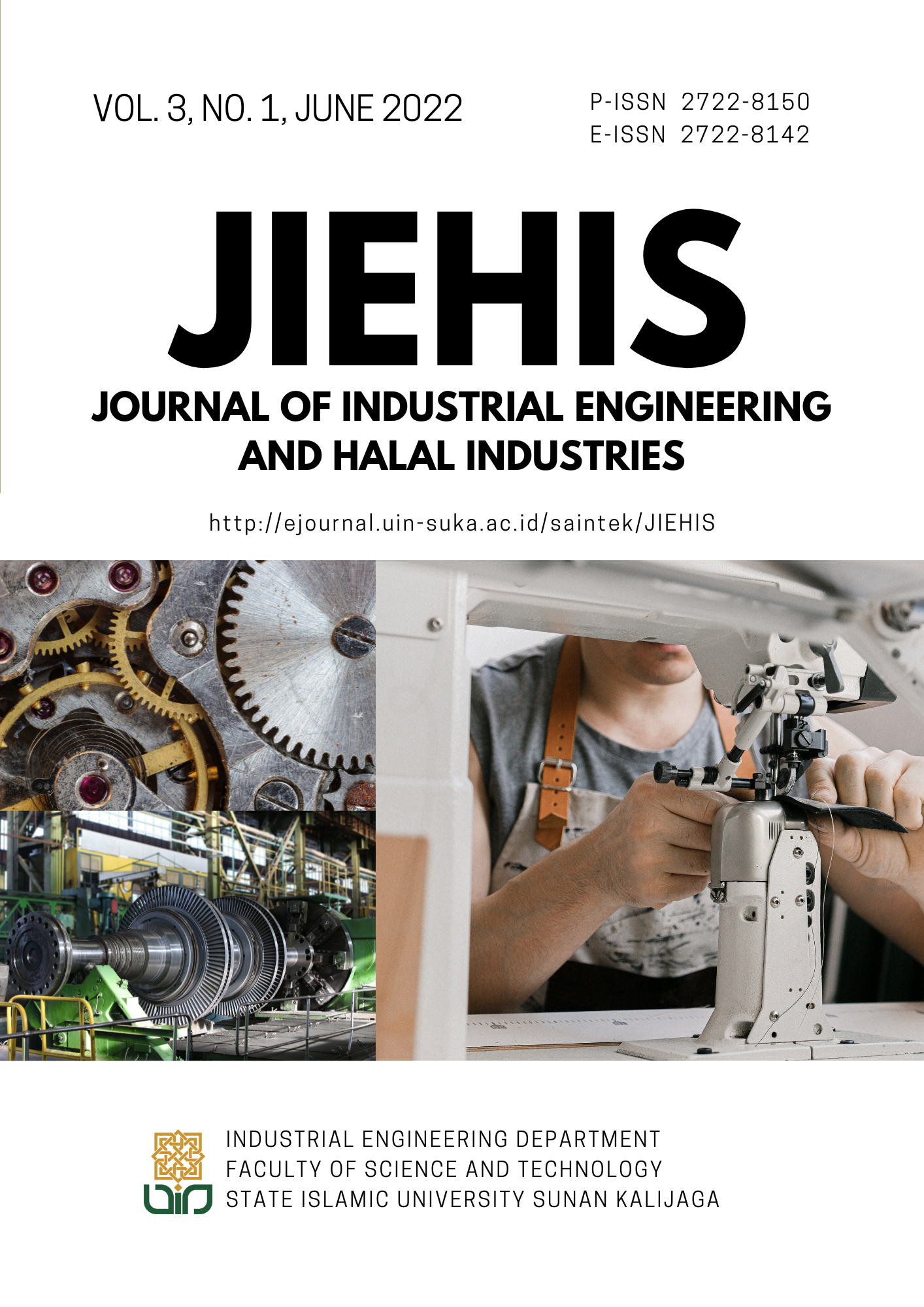ANALYSIS AND DESIGN OF ERGONOMIC WORK POSTURE IN CUTTING PART IN PT XYZ USING REBA METHOD
DOI:
https://doi.org/10.14421/jiehis.3517Keywords:
Work Facilities, Ergonomics, REBAAbstract
Human activity requires a tool that is designed or specifically designed to help work to be easier, safer and more comfortable, the right design can be obtained by applying anthropometry. Workers often experience complaints of pain in some parts of the body because work facilities are not ergonomic. The research objective is to obtain an ergonomic design of work facilities in accordance with anthropometry. Data collection is done by interviews, distributing questionnaires and taking data on the object of research. The results of data collection were tested for uniformity, adequacy, and normality, as well as calculating percentiles that were considered to represent the measured data. SNQ results indicate that workers are in the very painful category in the right upper arm, waist, right ankle, left ankle, left knee, right knee, left calf, right calf, left foot and right foot, which shows the working posture at the cutting station not ergonomic. The assessment of the level of work posture using the REBA method shows a high risk level of 7-9 meaning that workers need immediate improvement in the near future. The average workload with the 42% CVL method is in the category of improvement needed. The proposed work facility design is based on anthropometric principles, namely a work desk measuring 171.75 cm x 78.5 cm x 70.45 cm, a work chair 46.99cm x 31.67 cm x 45.25 cm, a storage box of 50 cm length and width 55 cm and trolley 76.58 cm x 60 cm x 77.07 cm.
References
Kuorinka, I., Jonsson, B., Kilbom, A., Vinterberg, H., Biering-Sorensen, F., Andersson G.,Jorgensen, K. 1987. Standardised Nordic Questionnaores (Applied Ergonomics)
Nurmianto, Eko. 2008. Ergonomi Konsep Dasar dan Aplikasinya. Surabaya: Guna Widya
Sinulingga, Sukaria. 2011. Metodologi Penelitian. Medan: USU Press.
Sutalaksana,I, dkk. 2006. Teknik Tata Cara Kerja. Bandung : Institut Teknologi Bandung.
Stanton, Naville. 2005. Handbook of Human Factors and Ergonomics Methods, (New York: CRC Press LLC,)
Tarwaka, dkk. 2004. Ergonomi Untuk Keselamatan, Kesehatan Kerja dan produktivitas. UNIBAS Press. Surakarta.
Wignjosoebroto, Sritomo. 1995. Ergonomi Studi Gerakan dan Waktu. Surabaya : PT. Guna Widya.
Downloads
Published
How to Cite
Issue
Section
License
Copyright (c) 2022 Sepriandi Parningotan, Isdaryanto Iskandar

This work is licensed under a Creative Commons Attribution-ShareAlike 4.0 International License.
(c) The Author(s). This article is distributed under a Creative Commons Attribution-ShareAlike 4.0 International License.






